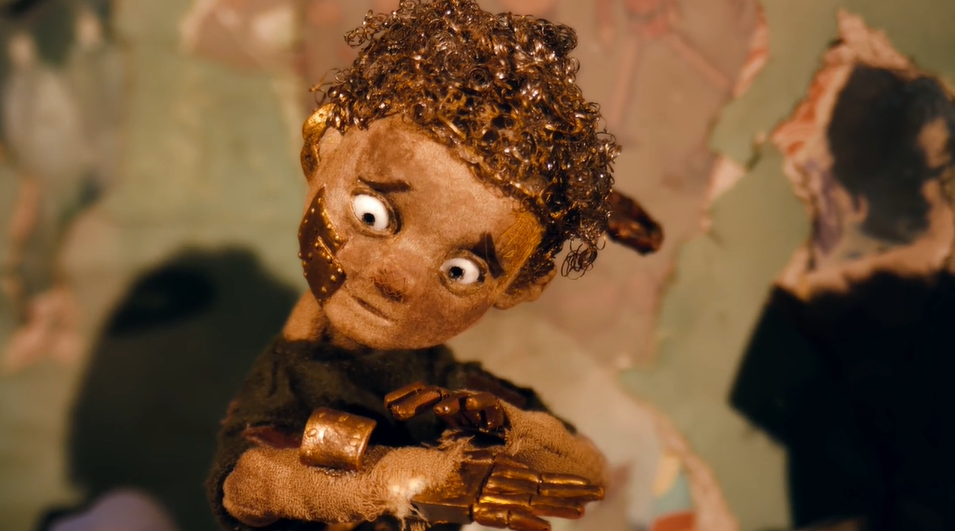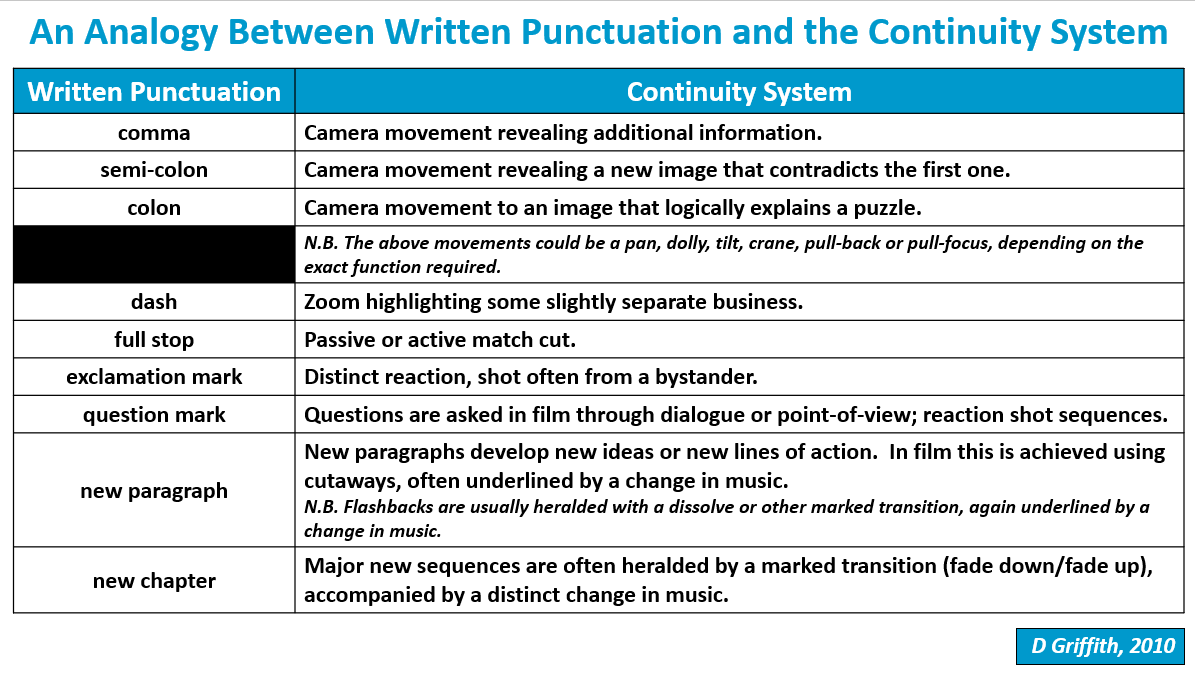Screen Punctuation and Grammar
Screen Punctuation and Grammar
Screen texts can be watched by anyone. Although films might seem transparent and obvious – simple almost – and although they do not use letter icons like books, they nevertheless have many other key attributes of a language:
- a defined 'vocabulary' of shots and angles
- 'punctuation' in the form of camera movements and edits
- a codified audio-visual 'grammar' that imparts specific meaning to particular shot sequences
This screen language can be just as complex and nuanced as in verbal or written forme, and just as rewarding to unpack. It is used to build and define the audience's relationship to characters, action, objects and emotions – and to progress the narrative in an emotionally engaging and apparently seamless fashion.
This development happened most rapidly between the years of 1895 to 1930, but changes continue to be made in the present day as new types of screen media are introduced and developed (e.g. new genres, computer games, interactive screen narratives, 3D film...)
Types of Screen Language
In this section we will look at the basic choices available to filmmakers in constructing the complex meanings of their narratives, choices that students should be aware of when reading a film.
It is important to note that we can only look at these areas briefly and in isolation here. When reading a film, the student needs to look both at the individual use of these elements as well as their total effect. For instance, a close-up reaction shot in a comedy could have a very different effect to one in an action film; similarly, the meaning of a cut may be significantly changed by a subsequent camera movement such as a pull-back to reveal.
It's worth noting too, that the shots and cuts that filmmakers don’t use can also be significant.
Edits and Transitions (Punctuating the Film)
An Analogy Between Written Punctuation and the Continuity System
Punctuation marks are symbols that indicate the structure and organisation of written language. They can also be used to signify intonation or pacing when reading aloud. Similarly, within the Continuity System, certain 'punctuating' devices are used to indicate the structure of the text, while the general speed and rhythm of the cuts sets the pace and rhythm of the film.
The use of this 'punctuation' is highly nuanced in order to explain the meaning of individual shots (audio-visual 'sentences') and sequences of shots (audio-visual 'paragraphs') but, since the punctuation marks are not symbols, it cannot be described exactly. For example, an filmmaker must decide how best to reveal new information within the basic 'sentence' from a wide variety of possible camera movements. The choice will also be influenced by the camera placement, choice of lenses etc. in the previous shot. For these reasons it would be impossible to produce a precise audio-visual punctuation guide; however, we hope this diagram will provide you with a starting point to understanding the analogy.
NB. Please note that to avoid turning the diagram into a glossary, we have avoided referring to certain shots (e.g. point-of-view shot) and cuts (e.g. jump cut). The aim here is simply to show that the analogy works. Once this is understood, the nuances of the system of audio-visual punctuation and grammar are there for each individual 'reader' to explore and discover.

